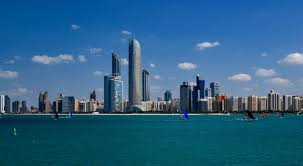Rule of law and strong creditworthiness allow investors to mitigate potential risks while securing economic interests
Over the past couple of decades, the GCC has attracted increasing interest from around the world as an investment destination.
This is the result of a conscious effort by the GCC member states to encourage foreign direct investment with plans such as UAE Vision 2021. The momentum has continued, with future plans like Kuwait Vision 2035, Abu Dhabi Economic Vision 2030, Saudi Arabia Vision 2030 and most recently, the $8.7 trillion Dubai Economic Agenda, D33.
As GCC states seek to diversify their economies and focus on environmental sustainability, frontiers have emerged in sectors such as real estate, telecoms and data infrastructure, financial technology and clean energy.
These opportunities, along with the advantages of investing in this region — rule of law, strong creditworthiness and many currencies pegged to the US dollar — allow investors to mitigate potential risks while securing economic interests.
When these benefits are paired with strong gross domestic product growth, the result is medium- to long-term asset value appreciation without the risk of foreign exchange volatility.
Similarly, investors looking at the infrastructure and real estate sectors in the region recently have identified that despite the same degree of credit risks as western markets, there are wider yields to be had from the GCC.
The region also boasts demographics conducive to investment. According to a Unicef report, a large portion of the Middle East population will be in their most productive years in the first half of the 21st century.
A young working-age population helps to amplify the transformational impact of new technologies and data, which shapes the region’s investment decisions and creates avenues for economic advancement.
Consistent population growth over time, coupled with the region’s affluence, can spur investment, production and consumption. These, in turn, should accelerate growth while also providing investors with an opportunity to capitalise on underpenetrated industries.
Adding to this momentum is the government-infused capital into sectors that continue to form pillars in the new economic milieu. As a result, there are private asset classes enjoying favourable investments.
Real estate for logistics
Supply chain resilience is the primary theme to watch for in this space, and we see a need for a large independent, institutional real estate logistics player.
The Dubai Chamber of Commerce forecasts that the UAE e-commerce market will reach $9.2 billion by 2026, due to the increased penetration of phones and internet access.
Additionally, the UAE government continues to invest in infrastructure for the logistics sector, including the $33 billion expansion of Al Maktoum Airport and the $270 million expansion of Jebel Ali Port.
Coupled with the wider yields the region offers, the sector provides build-to-suit opportunities that can be extended to e-commerce players, making it a sound avenue for investment.
Data centre and telecom infrastructure
With changing times and population growth, the demand for information is higher than ever. It also complements the need for telecom infrastructure, which represents a unique investment platform to capitalise on the roll-out of future technologies.
The Ministry of Communications and Information Technology of Saudi Arabia launched an $18 billion plan to build a network of large-scale data centres across the kingdom.
The Digital Government Strategy 2025 by the UAE government will create additional demand for data centres.
The governments in these countries are spending significantly to drive automation, increase connectivity and enable users to harness the power of their data. Data centres continue to play a crucial role in implementing these possibilities, especially in growing markets in the GCC.
Energy transition
Although the GCC is historically associated with oil and gas, there is a conscious move towards achieving net zero by 2050.
According to the UAE government, the implementation of Green Building and Sustainable Building standards is expected to save Dh10 billion ($2.7 billion) by 2030 and cut carbon emissions by about 30 per cent.
The GCC countries stand to gain from this transition, according to The Gulf Economic Update Report by the World Bank. The region already has three record-breaking, low-cost auctions for solar energy supply, and has the potential to be a lead producer and exporter of clean energy.
To achieve this vision, businesses in these economies will need either an operating partner or a capital provider to help them reach their energy transition goals.
Payments
Digital transformation of traditional businesses is under way and new-age solutions are increasingly taking centre stage.
The region’s population is readily embracing modern technologies, especially in payments. As disposable incomes rise, so will the demand in this space. The investment in these historically under-digitalised businesses is expected to increase with time.
Our in-house research shows that the UAE, Saudi Arabia and Egypt markets are underpenetrated in this regard when compared with developed nations, holding immense potential.
These asset classes show promise for providing strong risk-adjusted returns for investors across market cycles.
A combination of these themes — along with the region’s growing population, strong economy, low operating costs and potential high profit returns on capital investment — has set up the GCC as an investment beacon for decades to come.
Jad Ellawn is a managing director in Brookfield Asset Management and the regional head of the Middle East, responsible for the firm’s business activities in the region
https://www-thenationalnews-com.cdn.ampproject.org/c/s/www.thenationalnews.com/business/comment/2023/01/12/investment-opportunities-are-shining-a-light-on-the-gcc/?outputType=amp





